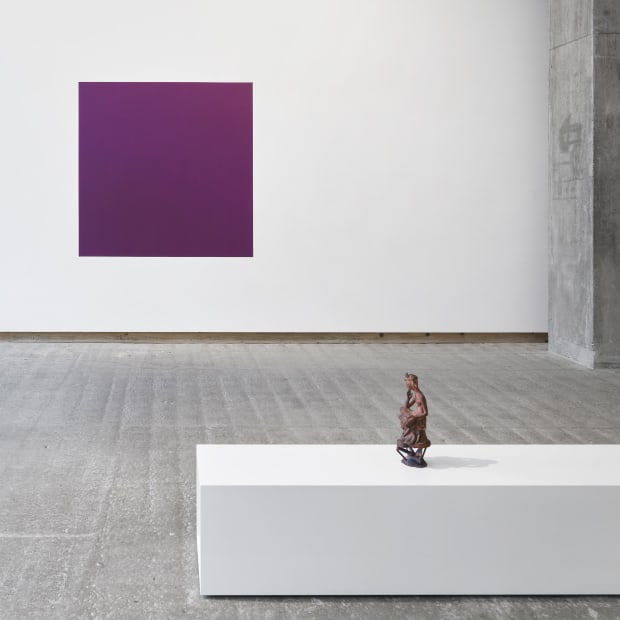Massimo Bartolini: Sparse steps
-
-
Massimo Bartolini’s practice is defined by a diverse range of artistic languages and materials, from immersive installation, performance and audience engagement to drawing, sculpture and assemblage. The artist’s work consistently reconfigures the relationship between the exhibition space and the viewer, often acting as an invitation – to sit, to contemplate, to connect and to listen – while also offering unexpected aesthetic and sensory experiences.
Music has become a key preoccupation for Bartolini, manifested most ambitiously in the Italian Pavilion at La Biennale di Venezia (2024). Due qui / To Hear presented four new works that together created an ‘inhabitable’ musical organ which centralised collaborative listening as a way to connect with others, the exhibition space and the world around us. In Sparse steps, the artist presents a single organ which runs the length of the gallery space, alongside a new series of wall-mounted ‘sound paintings.’
A new score has been written for the exhibition by composer and collaborator Gavin Bryars, in which all five ‘sound paintings’ are played together with two basses. The score was performed by Gavin and Yuri Bryars and members of the gallery team to mark the opening of the exhibition. You can watch part of this in the exhibition video below.
-

-

-

-

-
'The painting is not just a surface or even an illusion. It is something that contains a presence, and this presence is the sound. Whether it plays or not.'
-
-

-

-
-
'I discovered the book of Julian Barnes recently who said: "You put together two things that have not been together before. And the world is changed". And this is exactly what I have tried to do.'
-
-

-

-

-
Photography: Ben Westoby
Videography: Jon Lowe








